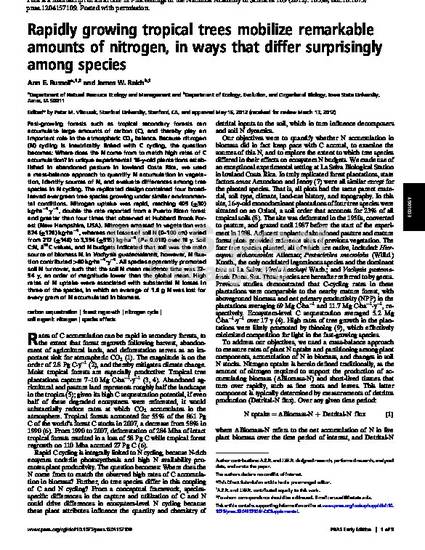
Fast-growing forests such as tropical secondary forests can accumulate large amounts of carbon (C), and thereby play an important role in the atmospheric CO2 balance. Because nitrogen (N) cycling is inextricably linked with C cycling, the question becomes: Where does the N come from to match high rates of C accumulation? In unique experimental 16-y-old plantations established in abandoned pasture in lowland Costa Rica, we used a mass-balance approach to quantify N accumulation in vegetation, identify sources of N, and evaluate differences among tree species in N cycling. The replicated design contained four broad-leaved evergreen tree species growing under similar environmental conditions. Nitrogen uptake was rapid, reaching 409 (±30) kg⋅ha−1⋅y−1, double the rate reported from a Puerto Rican forest and greater than four times that observed at Hubbard Brook Forest (New Hampshire, USA). Nitrogen amassed in vegetation was 874 (±176) kg⋅ha−1, whereas net losses of soil N (0–100 cm) varied from 217 (±146) to 3,354 (±915) kg⋅ha−1 (P = 0.018) over 16 y. Soil C:N, δ13C values, and N budgets indicated that soil was the main source of biomass N. In Vochysia guatemalensis, however, N fixation contributed >60 kg⋅ha−1⋅y−1. All species apparently promoted soil N turnover, such that the soil N mean residence time was 32–54 y, an order of magnitude lower than the global mean. High rates of N uptake were associated with substantial N losses in three of the species, in which an average of 1.6 g N was lost for every gram of N accumulated in biomass.
Available at: http://works.bepress.com/ann_russell/13/

This is a manuscript of an article in Proceedings of the National Academy of Sciences 109 (2012): 10398, doi:10.1073/pnas.1204157109. Posted with permission.